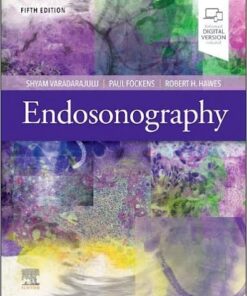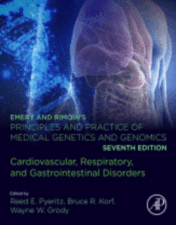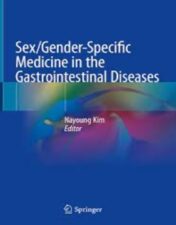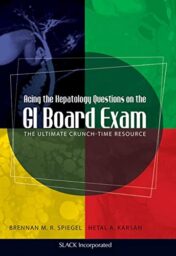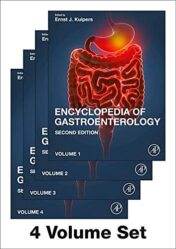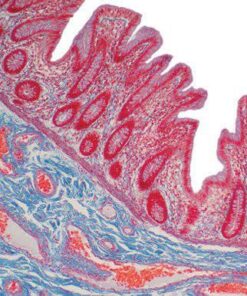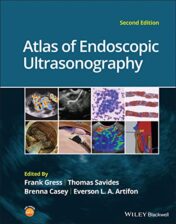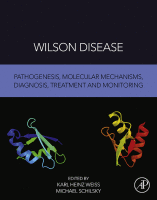GERD A New Understanding 2018 Original pdf
$8
GERD A New Understanding 2018 Original pdf
GERD: A New Understanding of Pathology, Pathophysiology, and Treatment transforms the assessment of gastroesophageal reflux disease (GERD) from its present state, which is largely dependent on clinical definition and management, to a more objective scientific basis that depends on pathologic assessment. Sequential chapters in this single-author book describe the fetal development of the esophagus, the normal adult state, and the way exposure to gastric juice causes epithelial and lower esophageal sphincter damage at a cellular level. It allows recognition of the pathologic manifestations of lower esophageal sphincter damage and develops new histopathologic criteria for quantitating such damage. This understanding provides new pathologic criteria for definition and diagnosis of GERD from its earliest cellular stage. Algorithms based on measurement of sphincter damage can identify, even before the onset of clinical GERD, persons who will never develop GERD during life, those who develop GERD but remain with mild and easily controlled disease, and those who will progress to severe GERD with failure to control symptoms, Barrett esophagus and adenocarcinoma. Aggressive early intervention in the last group with the objective of preventing disease progression to its end points of uncontrolled symptoms and adenocarcinoma becomes feasible.
Related Products
GASTROENTEROLOGY & HEPATOLOGY BOOKS
GASTROENTEROLOGY & HEPATOLOGY BOOKS
Journal of Pediatric Gastroenterology & Nutrition 2022 Archive (True PDF)
GASTROENTEROLOGY & HEPATOLOGY BOOKS
GASTROENTEROLOGY & HEPATOLOGY BOOKS
GASTROENTEROLOGY & HEPATOLOGY BOOKS
Non-Umbilical Laparoscopic Entry Ports (Original PDF from Publisher)
GASTROENTEROLOGY & HEPATOLOGY BOOKS
GASTROENTEROLOGY & HEPATOLOGY BOOKS
GASTROENTEROLOGY & HEPATOLOGY BOOKS
The Gut Microbiome: Bench to Table (Original PDF from Publisher)
GASTROENTEROLOGY & HEPATOLOGY BOOKS
GASTROENTEROLOGY & HEPATOLOGY BOOKS
Hereditary and Familial Colorectal Cancer (Original PDF from Publisher)
GASTROENTEROLOGY & HEPATOLOGY BOOKS
GASTROENTEROLOGY & HEPATOLOGY BOOKS
Handbook of Gastroenterologic Procedures, 5th Edition 2020 Original PDF
GASTROENTEROLOGY & HEPATOLOGY BOOKS
GASTROENTEROLOGY & HEPATOLOGY BOOKS
CPT Coding Essentials for General Surgery and Gastroenterology 2022 Epub+ converted pdf
GASTROENTEROLOGY & HEPATOLOGY BOOKS
GASTROENTEROLOGY & HEPATOLOGY BOOKS
CPT Coding Essentials for General Surgery and Gastroenterology 2021 Original PDF
GASTROENTEROLOGY & HEPATOLOGY BOOKS
GASTROENTEROLOGY & HEPATOLOGY BOOKS
Gastroenterology Clinics of North America 2021 Full Archives True PDF
GASTROENTEROLOGY & HEPATOLOGY BOOKS
GASTROENTEROLOGY & HEPATOLOGY BOOKS
GASTROENTEROLOGY & HEPATOLOGY BOOKS
The Digestive System: Systems of the Body Series, 3rd edition 2022 Original PDF
GASTROENTEROLOGY & HEPATOLOGY BOOKS
GASTROENTEROLOGY & HEPATOLOGY BOOKS
GASTROENTEROLOGY & HEPATOLOGY BOOKS
GASTROENTEROLOGY & HEPATOLOGY BOOKS
GASTROENTEROLOGY & HEPATOLOGY BOOKS
GASTROENTEROLOGY & HEPATOLOGY BOOKS
GASTROENTEROLOGY & HEPATOLOGY BOOKS
GASTROENTEROLOGY & HEPATOLOGY BOOKS
Management of Inpatient Inflammatory Bowel Disease A Comprehensive Handbook 2022 Original pdf
GASTROENTEROLOGY & HEPATOLOGY BOOKS
GASTROENTEROLOGY & HEPATOLOGY BOOKS
Interpretation of Endoscopic Biopsy – Gastritis, Gastropathies and Beyond 2022 Original pdf
GASTROENTEROLOGY & HEPATOLOGY BOOKS
GASTROENTEROLOGY & HEPATOLOGY BOOKS
Sex/Gender-Specific Medicine in the Gastrointestinal Diseases 2022 Original pdf
GASTROENTEROLOGY & HEPATOLOGY BOOKS
GASTROENTEROLOGY & HEPATOLOGY BOOKS
Bench Aids for the Diagnosis of Intestinal Parasites 2nd Ed 2019 Original pdf
GASTROENTEROLOGY & HEPATOLOGY BOOKS
GASTROENTEROLOGY & HEPATOLOGY BOOKS
Small Intestine Disease: A Comprehensive Guide to Diagnosis and Management 2022 Original PDF
GASTROENTEROLOGY & HEPATOLOGY BOOKS
Successful Training in Gastrointestinal Endoscopy, 2nd Edition 2022 Original PDF
GASTROENTEROLOGY & HEPATOLOGY BOOKS
GASTROENTEROLOGY & HEPATOLOGY BOOKS
The Wise Scalpel: Tips & Traps in liver, gallbladder & pancreatic surgery 2022 Original PDF
GASTROENTEROLOGY & HEPATOLOGY BOOKS
GASTROENTEROLOGY & HEPATOLOGY BOOKS
Textbook of Gastrointestinal Radiology, 5th Edition 2021 Videos
GASTROENTEROLOGY & HEPATOLOGY BOOKS
Encyclopedia of Gastroenterology, 2nd Edition 2019 Original PDF
GASTROENTEROLOGY & HEPATOLOGY BOOKS
Tuberculosis of the Gastrointestinal system 2022 Original PDF
GASTROENTEROLOGY & HEPATOLOGY BOOKS
Yamada’s Atlas of Gastroenterology, 6th Edition 2022 Original PDF
GASTROENTEROLOGY & HEPATOLOGY BOOKS
GASTROENTEROLOGY & HEPATOLOGY BOOKS
Current Topics in Gastrointestinal and Liver Pathology 2022 CME VIDEOS
GASTROENTEROLOGY & HEPATOLOGY BOOKS
Yamada’s Textbook of Gastroenterology, 7th Edition 2022 Original PDF
GASTROENTEROLOGY & HEPATOLOGY BOOKS
GASTROENTEROLOGY & HEPATOLOGY BOOKS
Best Practice ; Research Clinical Gastroenterology 2021 Full Archives True PDF
GASTROENTEROLOGY & HEPATOLOGY BOOKS
Clinics and Research in Hepatology and Gastroenterology 2021 Full Archives True PDF
GASTROENTEROLOGY & HEPATOLOGY BOOKS
GASTROENTEROLOGY & HEPATOLOGY BOOKS
GASTROENTEROLOGY & HEPATOLOGY BOOKS
Simplified Laparoscopic Hysterectomy: Practical, Safe and Economic Methodology 2018 Original PDF
GASTROENTEROLOGY & HEPATOLOGY BOOKS
Textbook and Atlas of Laparoscopic Hysterectomy 2016 Original PDF
GASTROENTEROLOGY & HEPATOLOGY BOOKS
Vascular Disorders of the Liver VALDIG’s Guide to Management and Causes 2021 Original pdf
GASTROENTEROLOGY & HEPATOLOGY BOOKS
Pancreas Transplantation – the Asian Experience: A Registry Report 2021 Original PDF
GASTROENTEROLOGY & HEPATOLOGY BOOKS
American journal of gastroenterology 2021 full archives true pdf
GASTROENTEROLOGY & HEPATOLOGY BOOKS
The ASCRS Textbook of Colon and Rectal Surgery 4th ed 2022 Original PDF+Video’s
GASTROENTEROLOGY & HEPATOLOGY BOOKS
Current and Future Developments in Surgery Volume 2: Oesophago-gastric Surgery 2018 Original pdf
GASTROENTEROLOGY & HEPATOLOGY BOOKS
Current and Future Developments in Surgery Volume 1: Oesophago-gastric Surgery 2018 Original pdf
GASTROENTEROLOGY & HEPATOLOGY BOOKS
Curbside Consultation in IBD: 49 Clinical Questions 2021 Original pdf
GASTROENTEROLOGY & HEPATOLOGY BOOKS
Atlas of Endoscopic Ultrasonography, 2nd Edition 2021 Original pdf
GASTROENTEROLOGY & HEPATOLOGY BOOKS
Foundations of Colorectal Cancer 1st Edition 2021 Original pdf
GASTROENTEROLOGY & HEPATOLOGY BOOKS
Atlas of Endoscopic Ultrasonography 2nd Ed 2021 epub+converted pdf
GASTROENTEROLOGY & HEPATOLOGY BOOKS
GASTROENTEROLOGY & HEPATOLOGY BOOKS
Clinical Cases in Hepatology: Principles and Practice 1st ed 2021 Original pdf
GASTROENTEROLOGY & HEPATOLOGY BOOKS
Blumgart’s Surgery of the Liver, Pancreas and Biliary Tract 2012 Original pdf
GASTROENTEROLOGY & HEPATOLOGY BOOKS
GASTROENTEROLOGY & HEPATOLOGY BOOKS
GASTROENTEROLOGY & HEPATOLOGY BOOKS
GASTROENTEROLOGY & HEPATOLOGY BOOKS
GASTROENTEROLOGY & HEPATOLOGY BOOKS
Liver Regeneration Basic Mechanisms, Relevant Models and Clinical Applications 2016 Original pdf
GASTROENTEROLOGY & HEPATOLOGY BOOKS
GASTROENTEROLOGY & HEPATOLOGY BOOKS
Practical Hepatic Pathology: A Diagnostic Approach 2011 Original pdf
GASTROENTEROLOGY & HEPATOLOGY BOOKS
GASTROENTEROLOGY & HEPATOLOGY BOOKS
GASTROENTEROLOGY & HEPATOLOGY BOOKS
GASTROENTEROLOGY & HEPATOLOGY BOOKS
The Liver Oxidative Stress and Dietary Antioxidants 2018 Original pdf
GASTROENTEROLOGY & HEPATOLOGY BOOKS
Liver Pathophysiology Therapies and Antioxidants 20107 Original pdf
GASTROENTEROLOGY & HEPATOLOGY BOOKS
GASTROENTEROLOGY & HEPATOLOGY BOOKS
Medical Semiology Guide of the Digestive System Part 1 2020 Original pdf
GASTROENTEROLOGY & HEPATOLOGY BOOKS
Medical Semiology Guide of the Digestive System Part II 2020 Original pdf
GASTROENTEROLOGY & HEPATOLOGY BOOKS
GASTROENTEROLOGY & HEPATOLOGY BOOKS
The Microbiota in Gastrointestinal Pathophysiology 2017 Original pdf
GASTROENTEROLOGY & HEPATOLOGY BOOKS
Research and Clinical Applications of Targeting Gastric Neoplasms 2021 Original pdf
GASTROENTEROLOGY & HEPATOLOGY BOOKS
GASTROENTEROLOGY & HEPATOLOGY BOOKS
Therapie-Handbuch – Gastroenterologie und Hepatologie 2021 Original pdf
GASTROENTEROLOGY & HEPATOLOGY BOOKS
GASTROENTEROLOGY & HEPATOLOGY BOOKS
GASTROENTEROLOGY & HEPATOLOGY BOOKS
GASTROENTEROLOGY & HEPATOLOGY BOOKS
GASTROENTEROLOGY & HEPATOLOGY BOOKS
Dietary Interventions in Liver Disease Foods, Nutrients, and Dietary Supplements 2019 Original pdf
GASTROENTEROLOGY & HEPATOLOGY BOOKS
GASTROENTEROLOGY & HEPATOLOGY BOOKS
GASTROENTEROLOGY & HEPATOLOGY BOOKS
GASTROENTEROLOGY & HEPATOLOGY BOOKS
The Complex Interplay Between Gut-Brain, Gut-Liver, and Liver-Brain Axes 2021 Original pdf















